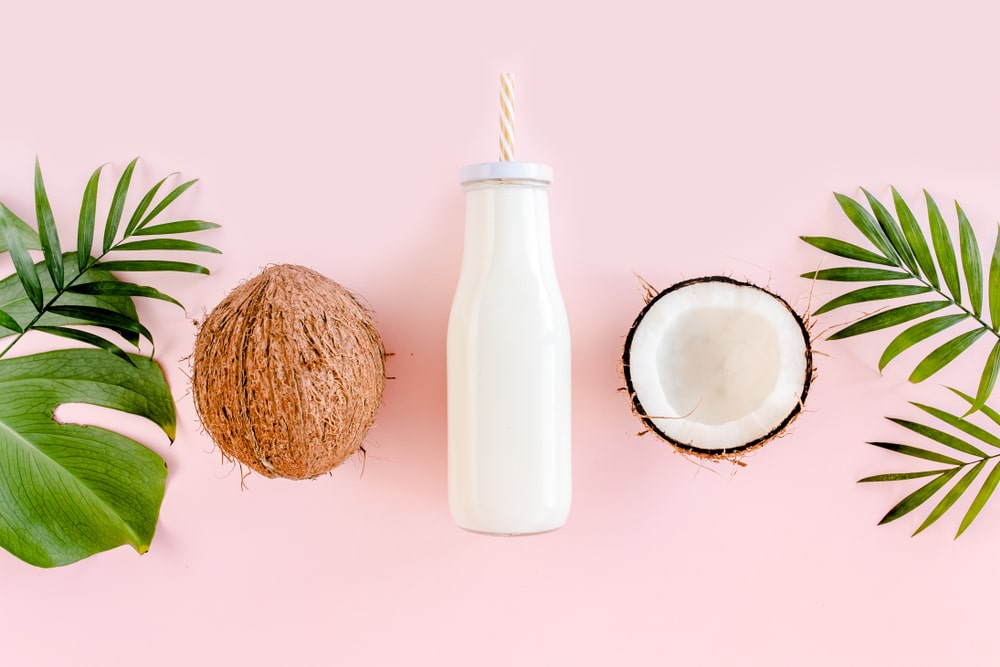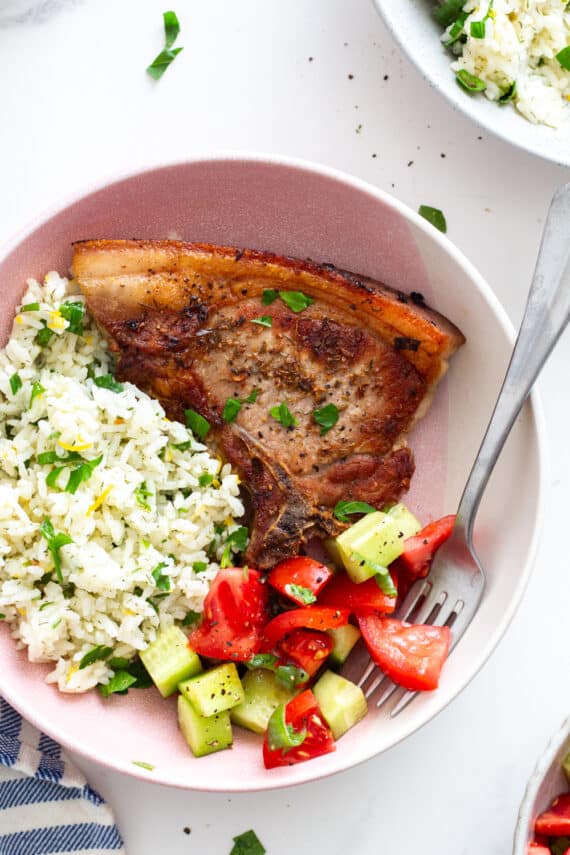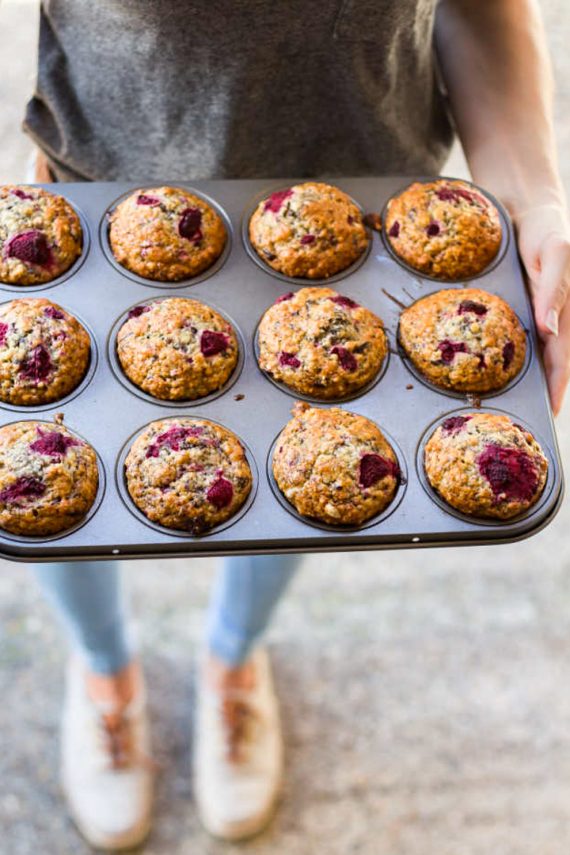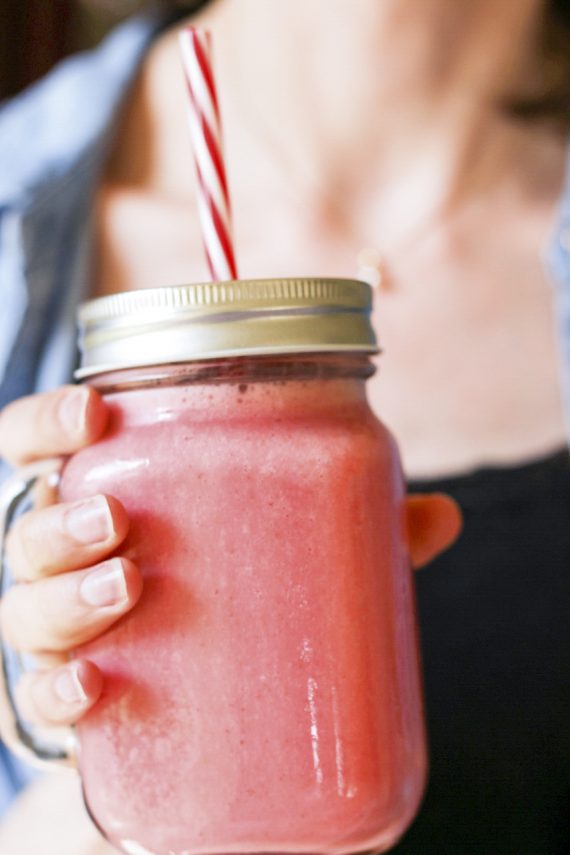Coconut products can be a bit tricky on the low FODMAP diet, as some products are suitable and others are not! This article discusses what coconut products are low FODMAP and what coconut products you may need to limit or avoid. The following information is based on the research findings presented in the Monash University FODMAP Diet App.
Low FODMAP Coconut Products
Coconut Oil (Low FODMAP)
All cooking oils are considered low FODMAP, as they do not contain carbohydrates (which are sources of FODMAPs). Coconut oil is extracted by cold-pressing the coconut flesh (2), and Monash University has confirmed that it is low FODMAP (1).
Coconut Cream (Low FODMAP)
Coconut cream is also low FODMAP and remains low FODMAP in large servings. Check the Monash University FODMAP Diet App for more information.
Coconut Yoghurt (Low FODMAP)
Coconut yoghurt has been tested by Monash University and it is low FODMAP in 125g (1 tub) serves (1). When choosing your coconut yoghurt avoid products that contain inulin, fructose, high FODMAP fruit, or high FODMAP sweeteners like honey, agave or fruit juice.
Coconut Dried & Shredded (Low FODMAP)
Dried and shredded coconut (desiccated coconut) is made from the flesh of a mature coconut, which is shredded/flaked and then dried (2 5). According to Monash University, desiccated coconut is low FODMAP in 1/2 cup serves which is plenty when you are baking of cooking. Just keep in mind that larger servings of 3/4 cup contain moderate to high levels of polyols. This means if you are in the first stage of the low FODMAP diet, limit yourself to a 1/2 cup serve or less of desiccated coconut in any one sitting.
Coconut Products That Need Portion Control
Coconut Aminos (Limit to small servings)
Coconut aminos are produced from the sap of the coconut plant. This product is often used to replace soy sauce in recipes. According to Monash University coconut aminos are low FODMAP in 1 teaspoon servings, however larger serves can become high FODMAP. Check the Monash University FODMAP Diet App for more information.
Coconut Ice Cream (Limit to small servings)
Coconut ice cream is made from coconut milk and then flavoured with other ingredients (2). Because the main ingredient in this product is coconut milk, the ice creams might have a low FODMAP serving. However, you need to watch out for sneaky FODMAPs. When choosing either coconut ice cream, check that it does not contain inulin, and has not been sweetened or flavoured with other high FODMAP ingredients. When consuming coconut ice cream we suggest you test your tolerance levels to a 60ml (1/4 cup serve) and increase your serving size from there.
Coconut Milk (Limit to small servings)
Coconut milk and cream are both made from the flesh of a mature coconut. Water is added to the flesh before it is ground into a fine pulp, the juice is then separated through pressing (2). As the fluid settles, it separates into higher-fat cream and lower fat milk (2).
According to Monash University most UHT coconut milk is low FODMAP at 125ml (1/2 cup) serves (1). This is the coconut milk that comes in the cardboard cartons. However, be aware that these UHT milks often contain moderate FODMAPs at 150ml, and are high FODMAP at 250ml (1 cup) serving sizes (1). Avoid any coconut milk that contains inulin during the first phase of the low FODMAP diet.
Canned coconut milk is low FODMAP 1/4 cup serves, however larger serves (1/2 cup or more) contain moderate to high levels of sorbitol (1).
Coconut Treacle (Limit to small servings)
Coconut treacle is also made by refining the sap extracted from the coconut palm tree. It is low FODMAP in ½ tablespoon serves, however it contains moderate amounts of fructans at a 1 tablespoon serve (1). The fructan levels could be due to the naturally occurring inulin in the coconut sap.
Coconut Water (Limit to small servings)
Coconut water is the clear juice harvested from the centre of coconuts (2 4). According to Monash University coconut water (fresh or packaged) is high FODMAP and contains sorbitol and fructans (1). If you are in the first phase of the low FODMAP diet, then limit your serving to 100ml (1). This small amount of coconut water is low FODMAP and should be well tolerated. Once you’ve tested your tolerance levels to sorbitol and fructans you can try a larger serving.
Fresh Coconut Flesh (Low to Moderate FODMAP)
Fresh coconut flesh is low FODMAP in 3/4 cup serves (1). Larger serving sizes of 1 cup can contain moderate levels of sorbitol (1). This means if you want to try fresh coconut flesh start with a 3/4 cup serving size.
Coconut Products That Are High FODMAP
Coconut Sugar (High FODMAP)
Coconut sugar is made from the flower sap of the coconut palm and is different to palm sugar, which comes from the date palm (2). According to Monash University coconut sugar is low FODMAP in 1 teaspoon serves, however larger serves of 3 teaspoons are high FODMAP for fructans (1). This means you need to be careful when using coconut sugar during the first phase of the low FODMAP diet and limit your intake. When baking use brown sugar instead of coconut sugar in recipes.
An interesting fact about coconut sugar is that it contains naturally occurring inulin (6). Inulin is a prebiotic, which feeds the bacteria in our guts. When the bacteria ferment the inulin they create gas, which can cause Irritable Bowel Syndrome symptoms. Inulin is classed as a fructan and considered high FODMAP (1).
Are you ready to take control of your gut symptoms?
No thanks, my gut is perfect.
Article continues below
Coconut Flour (High FODMAP)
Coconut flour is a by-product of coconut milk production (2 15).
Coconut flour has been tested by Monash University and it is high FODMAP. Testing shows that coconut flour can containg high levels of excess frutose, fructans as well as sorbitol (1).
Another potential issue with coconut flour is its fibre content. While fibre isn’t an issue on the low FODMAP diet, some types of fibre can aggravate IBS symptoms (read more here). According to researchers, coconut flour contains 60.9% total dietary fibre, 56.8% insoluble and 3.8% soluble (8). As discussed in our article on low FODMAP fibre sources, insoluble fibre helps keep us regular. However, research also indicates that some IBS patients do not tolerate high levels of insoluble fibre (like bran), and that increasing the insoluble fibre in their diets could worsen IBS symptoms (9 10 11). This means that for some people with IBS coconut flour will not be a suitable option.
Final Thoughts
Overall using coconut products can be a delicious way to make tasty low FODMAP meals. However, you need to choose your coconut products carefully and follow the recommended serving sizes provided by the Monash University FODMAP Diet App. For more tips on how to love your low FODMAP diet follow us on Facebook https://www.facebook.com/alittlebityummy
Health Note on Coconut Products:
Although this isn’t a FODMAP issue, it is important to note that coconut products (oil, milk, cream, yoghurt, ice cream, and desiccated coconut) are high in saturated fats, and should be consumed in moderation (2 5). For example, coconut oil contains 87% saturated fats and two-thirds of these saturated fats consist of lauric acid (2). A report from the expert consultation by the Food and Agriculture Organisation (FAO) of the United Nations states that lauric acid raises LDL-cholesterol (bad cholesterol) levels (2 12). This means if you decide to use coconut oil or other coconut products in your low FODMAP diet try to use them in moderation.
Image Credit: K.Decor/Shutterstock












Thankyou so much for your hard work in publishing this blog, I keep coming across it every time I do a fodmap search for this or that. With that in mind I have finally subscribed….I can honestly say that your work is friendly and very relatable for someone going throuh the fodmap journey. Many many thanks, kindest regards Deb
You are so very welcome Deborah! We are here to help you on your journey 🙂
Coconut cream has a high fat content; fats are low fodmap anyway. Therefore I wonder if coconut cream would be a lower fodmap than coconut milk!
It is definitely possible that coconut cream is lower in FODMAPs due to the fat content but we won’t know for certain until it is laboratory tested. In the meantime if you want to try coconut cream we suggest trying a 1/3 cup serve and working your way up to a 1/2 cup serve if your symptoms stay settled.
Haagen Daz Coconut Carmel frozen non dairy dessert doesn’t have any bad additives or gums except a little pectin and is made with coconut cream. The sweetener is regular corn syrup, not high fructose corn syrup. Overall it seems fairly low FODMAP. Great for Lactose intolerance and for IBS. I eat less than 1/2 the recommended serving anyway because I also have to watch my sugar!
Hi Vasantha,
Thanks for letting us know about this product. We’ve just had a look at the ingredients and they all look relatively low FODMAP. This means if someone wants to try it, we’d suggest starting with 1/3 cup and increasing your serve from there.
Hi there. Noticed coconut milk powdered shows all green in monarsh as no FODMAPS. Do you know why the powder form of coconut milk would be all greens rather than regular coconut milk?
Hi Julie,
Thanks for commenting! Right now we know that 1 tablespoon of coconut milk powder is low FODMAP. It is possible the way the coconut milk powder is manufacture might reduce the FODMAP content. However until Monash University adds more information to the app we can’t say for sure that larger serves won’t become high FODMAP.
Hi
lm struggling with my ibs and have Gluten intolerance. any help would be grateful
Hi Janet,
Thanks for leaving a comment. We have most of our low FODMAP recipes that have gluten free options too. All you need to do is click on the ‘make gluten free’ and the recipe ingredients will convert to a gluten free option for you. You can check out our free recipes here: https://alittlebityummy.com/recipes/
Alternatively you can find over 600 IBS friendly recipes in our premium Recipe Club: https://alittlebityummy.com/low-fodmap-recipe-club/
Does that help?
Hi!!! So so confused as to whether or not Silk Coconut Milk has inulin in it! Would anyone know? I bought it and… I’m not sure EEK! How do I know what has inulin in it? Thanks in advance 🙂
Hi Charlotte,
Thanks for messaging. Okay so do the ingredients on your Silk Coconut Milk carton match these ingredients:
Coconutmilk (Filtered Water, Coconut Cream), Cane Sugar, Vitamin and Mineral Blend (Calcium Carbonate, Vitamin E Acetate, Vitamin A Palmitate, Vitamin D2, Vitamin B12), Dipotassium Phosphate, Sea Salt, Sunflower Lecithin, Gellan Gum, Locust Bean Gum, Ascorbic Acid (to protect freshness), Natural Flavor.
If they do then the coconut milk does not contain inulin and we would recommend you test your tolerance to a 1/2 cup (125ml) serving size. Does that help?